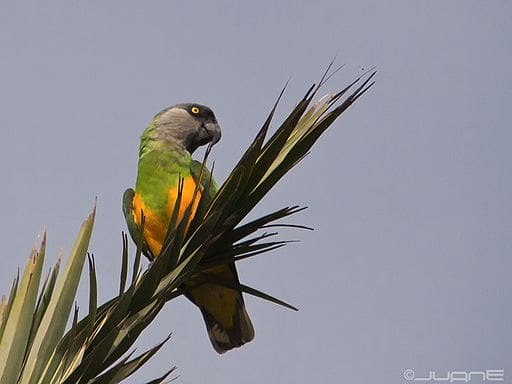The Senegal Parrot (Poicephalus senegalus) has a long history of being overexploited for trade: between 1985 and 2014, over 800,000 individuals were exported from Africa; this figure likely does not reflect the full extent of trade as illegal and domestic activities have not been fully accounted for. Concern is mounting that the Senegal Parrot is in decline as reductions in its numbers in some parts of its range have been reported.
A new project, ‘Distribution, habitats and local knowledge of the Senegal Parrot in Northern Benin’, is jointly funded by the WPT and Natural Encounters Conservation Fund through the Parrot Conservation Grants program. Young Pioneers for Development, an NGO based in Benin, is uncovering new data about the species in Benin. The team carried out two phases of interviews with hundreds of local people; the first allowed them to identify localities to conduct surveys and the second assessed knowledge and uses of Senegal Parrots by communities.
Status: IUCN Least Concern / CITES Appendix II
Population: Unknown, declining.
Range: P.s. senegalus: W African dry belt, mainly north of lat 9N, from S Mauritania, Senegal, Guinea, including Los Islands and S Mali east to S Burkina Faso and N Nigeria.
P.s. versteri: W African wet zone, north of rainforest belt to lat 9N from Liberia (introduced to Monrovia district) and Ivory Coast east to W Nigeria.
P.s. mesotypus: E and NE Nigeria, to N Cameroon, south to Adamawa Plateau, SW Chad, and possibly NE Central African Republic.
Natural history: This species is found in a wide range of wooded areas from open farmland with scattered trees to closed-canopy forests up to 1200 m (3936 ft). Takes fruit, buds, seeds and flowers; also crops such as millet and peanuts. Senegal Parrots are social outside the breeding season and are usually seen in pairs but also in flocks of 20 or more to feed.

